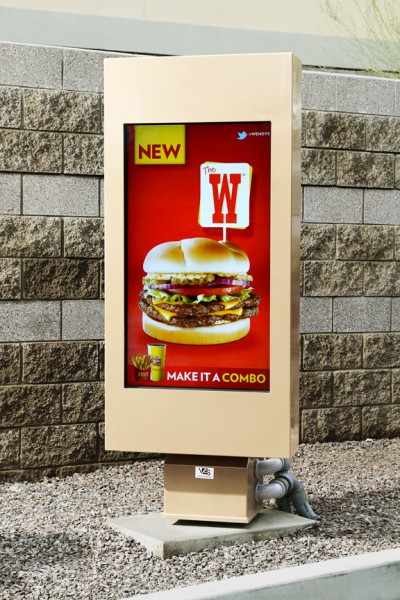By Rich Ventura
At the International Consumer Electronics Show (CES) in early 2012 in Las Vegas, Nev., the talk of the show floor—and the media—was the unveiling of new organic light-emitting diode (OLED) TV screens from a variety of manufacturers. Crowds of attendees were captivated by the narrow profile and visual clarity of these displays. The OLED screens were so thin, in fact, it became evident TVs will soon become not merely add-on appliances, but instead fully integrated components of people’s homes.
The advent of such technology brings to mind the nature of the digital signage industry, the degree to which it has evolved and where it is heading next. Different display technologies have played important roles in the growth of digital signage as a medium over the years.
In the earliest days of digital signage, organizations would simply install a standard cathode ray tube (CRT) TV and hook up a video feed to display advertising, event announcements, news, weather reports and other forms of content for their target audience. In some instances, merchants used a Video Home System (VHS) tape to provide this feed and market to their clientele.
As is the case today, digital signage back then was driven by users’ goals, purposeful content and practical applications. The bulky and heavy displays themselves, however, were not optimal for the commercial market, especially for businesses that required their systems to operate 24-7. With other advances on the horizon, it was clear CRTs would not fit the bill for long.
A handful of technologies soon took over the marketplace, including light-emitting diode (LED) arrays, plasma screens and thin film transistor (TFT) liquid crystal displays (LCDs). The latter two technologies, especially, captured most of the commercial display market, with their narrower designs introducing greater versatility than had previously been possible with CRTs.
Plasma screens
The size of plasma displays increased dramatically over the years. The first 1.1- and 1.3-m (42- and 50-in.) models were introduced in 1997. Further developments culminated in the debut of a 3.8-m (150-in.) plasma screen in 2008.
Plasma represented a very durable and high-performing technology, but compared to other display types, it used more energy and was less viable around-the-clock, as customers had to deal with issues of image burn-in. Today, while plasma still has a place within the digital signage market and some manufacturers continue to provide it, it is generally considered a relatively outdated technology.
LCDs
Large-format LCDs arrived later than plasma screens of the same size; the first 1-m (40-in.) LCD models, for example, shipped in 2003.
Today’s professional-grade LCDs typically provide higher brightness levels than plasma displays and are considered a ‘greener’ technology due to lower energy consumption.
Nonetheless, they are not perfect. Compared to plasma, they offer lower contrast levels, due to their transmissive technology and comparatively limited viewing angles.







